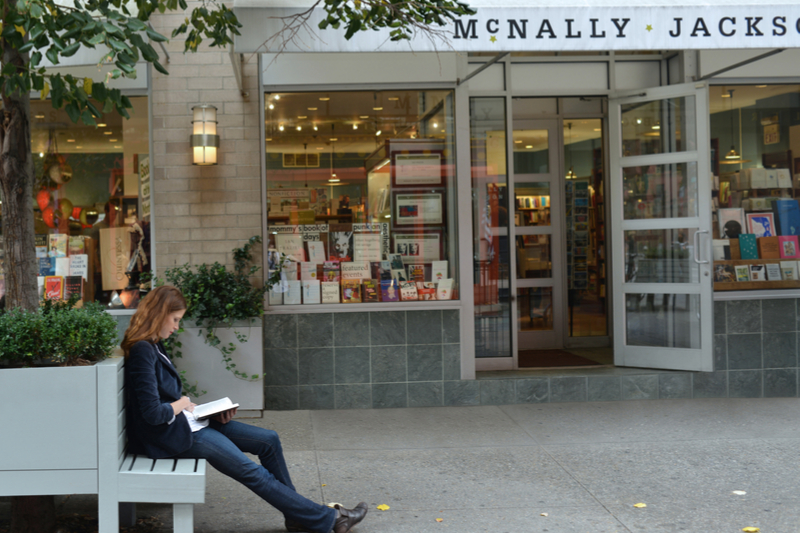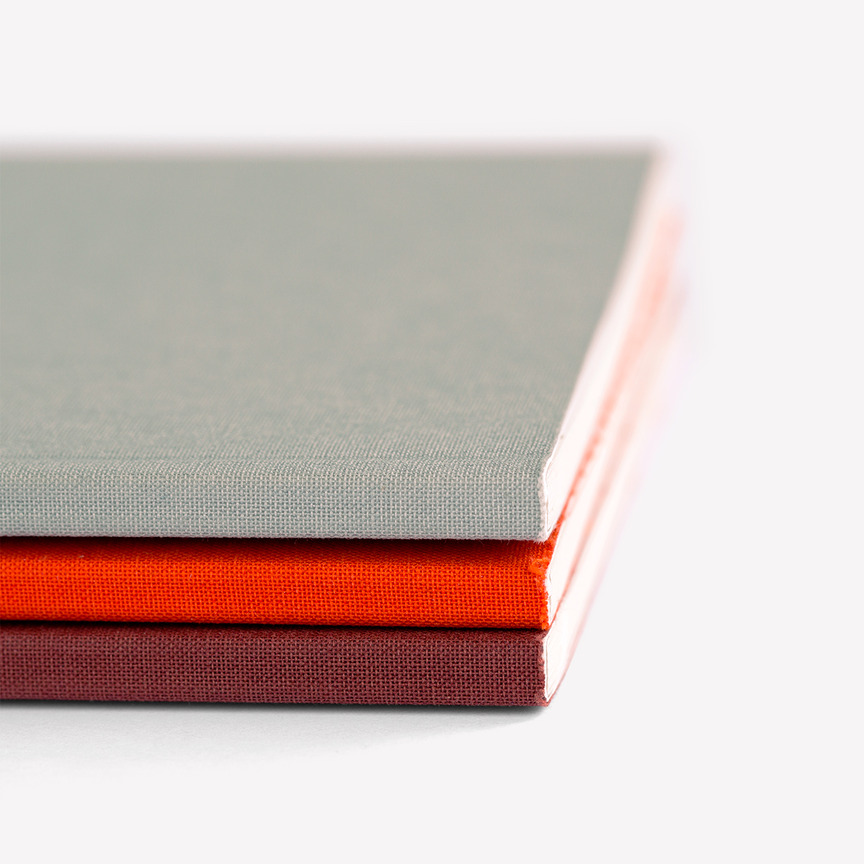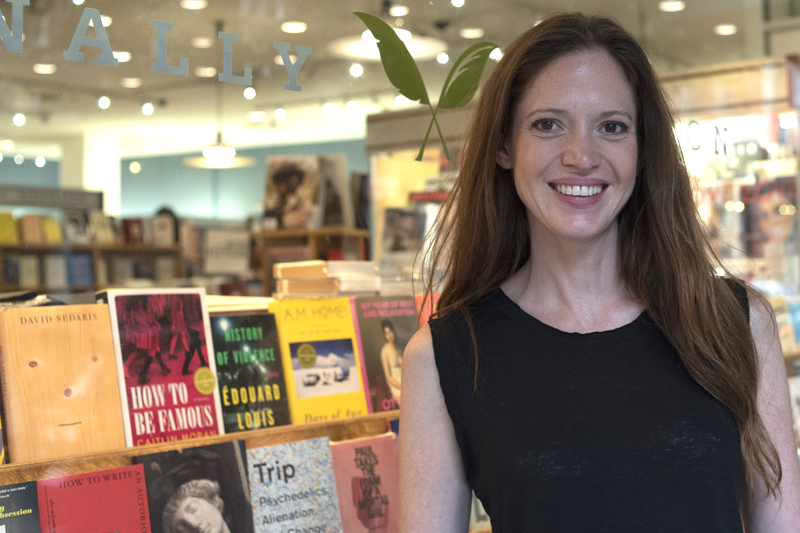How do you build an iconic independent brand? If you’ve ever disappeared into an indie bookstore for inspiration, chances are the space you’re in has been influenced by Sarah McNally, founder of legendary NYC bookstore Mcnally Jackson and stationery shop, Goods for The Study. In our latest Q&A she gives us her hard-won lessons and inspirations on entrepreneurship — and the keys to navigating change in real-time.
You were once quoted in The New York Times, saying, “book buying is aspirational; they’re deeply hopeful purchases.” What do you mean by that?
When you buy a book, you’re buying an intellectual and emotional journey, you’re buying an education. It’s a beautiful launching point, really. It’s so different than buying an object.
Speaking of launching points, what inspired you to start your own store? Your parents ran a bookstore in Winnipeg, Canada – was this something you always wanted to do growing up?
I never thought about it when I was young. I moved to New York to work in publishing, but didn’t love that world like I thought I would, so I left. I had such a pressing desire to open my own thing, but I didn’t know what that ‘thing’ was at the time. There wasn’t the kind of bookstore in New York that I wanted or had grown up with in my mom’s store; an events-driven, indie, comfortable, homey space; a bookstore as a, “Third Place.”
https://www.instagram.com/p/BgCQuWYHgWX/
From the beginning, I wanted to create an events-driven independent with seating. There were no chairs in any of the bookstores in Manhattan at that time.
When I opened McNally Jackson, there was all this space where people could sit, and it ended up being this comfortable and easy bookstore. It wasn’t a new idea and certainly not a business innovation, but it filled a big need in New York.
Is there a store or a place that left a mark on you as a kid? Perhaps something that you wanted to create your own version of or that influenced you as you were building McNally Jackson?
Hmmm, maybe. I’d have to think more about that because you do know that I grew up in Winnipeg, right? It’s not the most inspiring place in the world. That said, I had some mentors in bookselling who have left their marks on me for sure.
My mentor of mentors is Paul Yamazaki, who’s the buyer at City Lights Bookstore in San Francisco, who taught me a lot about courage in bookselling. He’s an incredibly courageous bookseller; much more than I am. At City Lights, they don’t carry something you could get anywhere, so if something is a best-seller, you probably shouldn’t go to City Lights to get it. They want every inch of their store to be dedicated to education and making this a better world. It’s really f*cking courageous.
My other real mentor is Rick Simonson, who’s the buyer at Elliott Bay in Seattle, which is such a beautiful store. His engagement with international literature is simply unbelievable; he’s been to literary festivals all over the world and has friends from every community because he’s in charge of events as well as buying for Elliott Bay.
So those are my two mentors; one for the steadfast devotion to the bookstore as an educational and mind-broadening space, and one for the dedication to the bookstore as a space to bring the entire world to the attention of American readers.
I find it remarkable that you have created a brand people want to associate themselves with. It’s such an achievement to have done that with a bookstore, especially in a neighborhood like SoHo, where you’re surrounded by luxury brands on every block.
What I’ve always tried to do is to make the bookstore friendly at all levels. So if you come in and you want whatever the Best Seller is, it’s there, it’s easy to find, and you don’t have to be embarrassed about buying it. But if you want to really devote yourself to the study of a particular subject, they too, are laid out in a friendly way.
There’s a real effort of friendliness in that store. There just really isn’t another word for it. Whenever someone comes in, whatever direction they come in from, we always try to meet them with intelligence and grace; whether they come in looking for horror novels, French literature, contemporary poetry, or business books. We try to meet them with a deep selection, which is an unusual method for bookstores because most have cut back so much on inventory and I’ve doubled up in there by stuffing every inch of the store I possibly can with books.
How did you pick the Prince Street location all those years ago in 2004?
I think it was beginner’s luck because I wasn’t a New Yorker; I had only lived here for five years, which is not that long. The city still feels fresh after five years.

I have a lot of preconceptions about what I should be doing. When I first decided to open where I opened, everyone told me I was nuts and that I was on the wrong side of Broadway. But I knew I was right; I did all the research, I drew on land use maps, I figured out where the traffic arteries were. I kept coming back to the same area in NoLiTa and could just see it. I knew it was okay, and yet everyone I knew in New York said; “You’re crazy, don’t do it.”
Let’s go inside the stores now — your newest shop in Williamsburg, Brooklyn is a very different design that feels fresh, light and airy, but still feels all about the books to me. How do you go about curating customer experience?
Between opening the first store and the one in Williamsburg, I opened two stationery stores called Goods for the Study and learned a lot from them. I was only 29 years old when we opened Prince Street and I didn’t have any idea what I was doing. I never had any money and it’s not that I didn’t have taste, but I just never had the opportunity to exercise my taste. So I was really just flying blind. In that time, and especially through the stationery stores, I learned a lot about design.
I think the Williamsburg store is much nicer than the Prince Street store, which is why I’m excited to move because I can update the look.*
When I’m looking at spaces, I have to decide— do I want somewhere that’s architecturally more interesting and more beautiful or somewhere that’s deep and dark and booky? Prince Street is the latter, but maybe I want to do something prettier this time. I’m really grappling with this while thinking about the move.
*Editor’s Update February 2019: McNally Jackson is staying put on Prince Street! And even massively expanding. Read New York’s Feb 2019 article here.
In a way, you need to determine what you’re willing to sacrifice or let go of.
There’s this book called Le Ton Beau de Marot written by Douglas R. Hofstadter, which is a book about translation. He took a little French poem that rhymes and that has three beats per line, and he gave it to fifty different translators. Every translator had to sacrifice something: meaning, rhythm, or rhyme. Now, when I’m looking at all these spaces to move the bookstore, every one of them will sacrifice something; either meaning, rhythm, or rhyme.
View this post on Instagram
I’m really grappling with what, philosophically, are the essential parts of McNally Jackson.
I try to think, “what is the best way to be friendly at a bookstore to New Yorkers right now?” Is it to stay deep and dark and mythic? I don’t know. The Prince Street store is not about design at all; all the choices I made when I was 29 are weird. I put wood, metal, and stone together, which is crazy. When you walk into the store, you don’t think; “Ooh, what a well-designed store!” You think; “Huh, there are a lot of books here.”
How do you go about choosing what to carry in the stores? Is it mostly a gut feeling?
It’s just like anything else; if you expose yourself to something a lot, then you can trust your gut. If I walk into a clothing store, I can’t trust my gut because I know nothing about clothes. I have to keep it simple and stick to jeans and t-shirts. The first stationery things I bought for the store, like the cards for example, were so horrible. I have one that I keep on my desk just to remind myself that I came from nothing. I’ve also learned from people I’ve worked with. Over time, as you expose yourself to a world, you can start to trust your gut. But you have to do the work on the knowledge base before you can act instinctually.
Can we talk about the decision to categorize books by geography? I love that about McNally Jackson.
It’s amazing no one else does that, isn’t it? Kim’s Video, which was an institution when I moved to New York, did that with videos and I thought it was so cool, so I decided to do it with books. When I first opened though, I got a lot of negative feedback and complaints. Authors were really angry about it too.
https://www.instagram.com/p/BpSUOy5AzA5/
I was reading this book of essays by Milan Kundera where he was talking about how literary family trees are completely international, so I thought, “maybe this is silly,” and I rearranged all the books and put it back A-Z. Then my sales went down and I actually hated it because it felt like I had killed McNally Jackson. I put it back to the way it was and it’s been like that ever since and it will never change again. But I did get a lot of pushback when I first opened.
That’s somewhat understandable — was it because it was such a novelty at the time?
Yes. That, and also I was a young woman and people love telling young women what to do. Getting older has its own problems, but I will say, people tell me what to do less and less. Everyone used to just walk in and tell me what to do. When I look back at the time of opening that store, I remember men, whether they were reps or otherwise, who would come in and tell me what I was doing wrong. It was just unbelievable and it doesn’t happen anymore. I don’t know if that’s because I’m older or if it’s because the bookstore has clearly proven itself. I’m not sure what the genesis is, but it sure has changed.
Do you judge a book by its cover?
Book covers are rarely equal to their interiors, but they’re useful because they convey so much information. All of a publisher’s hopes and assumptions about a book are displayed on its cover. I can tell what kind of readers they hope to appeal to, what kind of book they think it is, and how much they hope it will sell. There aren’t a lot of extraordinary cover designs, especially since Peter Mendelsund left publishing, but there are still rules.
For example, I don’t think I have read a book with a pretty, handwritten title treatment in many years. To me, that font signals a feel-good emotional journey that is rarely what I’m looking for in a book. I often complain about covers since most of them are visually weak, but without them, I’m not sure how I could easily tell one book’s microgenre from another. Without covers, I am not sure how customers would navigate my bookstores’ front tables. They’d have to read the cover copy of every book to know if it was their sort of book. It would be totally impractical.
Now for some rapid-fire questions…
I’m a big stationery geek. What are you personally using right now?
Right now, I’m using a clear blue Sailor fountain pen and a Notem notebook. Notem is a Scandinavian brand and their planner has this great task list of To-Do, To-Call, To-Contact. It’s so great. I’m also using a Maharam notebook which are cloth-bound notebooks made by a local artist and I use the one that’s this bright, crazy blue and I love it. I also have a date book, which I put in a Louise Carmen cover.

What’s a book you’ve read and reread and would read again?
I’m re-reading The Magic Mountain by Thomas Mann now and it’s really great. I also return to Proust very often and I’ve read Life and Fate by Vasily Grossman many times too.
Favorite children’s book?
For really young kids, Fortunately, The Milk by Neil Gaiman. But then, I really love Alice in Wonderland for kids of all ages –and adults! I also really love Extra Yarn, which is a picture book by Mac Barnett.
Just for fun, complete this sentence: “Other than my phone, I never leave home without___.”?
A watch and a book. I actually don’t always have my phone on me, ha!
###
By Naz Ozbek for 818 Agency.
Naz is a writer currently residing in Istanbul, a graduate of the University of Pennsylvania and The Wharton School — and works closely with global arts and cultural institutions to help their brands evolve for a new generation.
Featured image photo: by Yvonne Brooks




